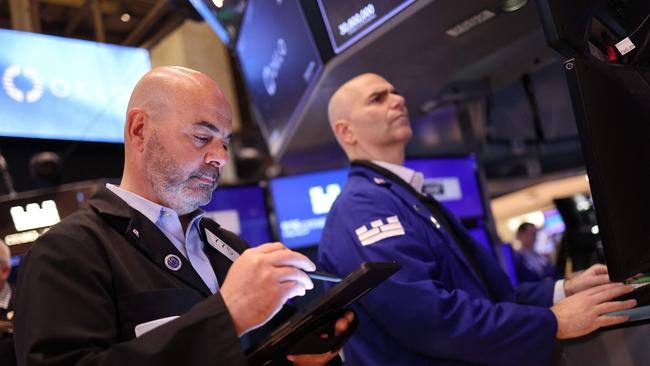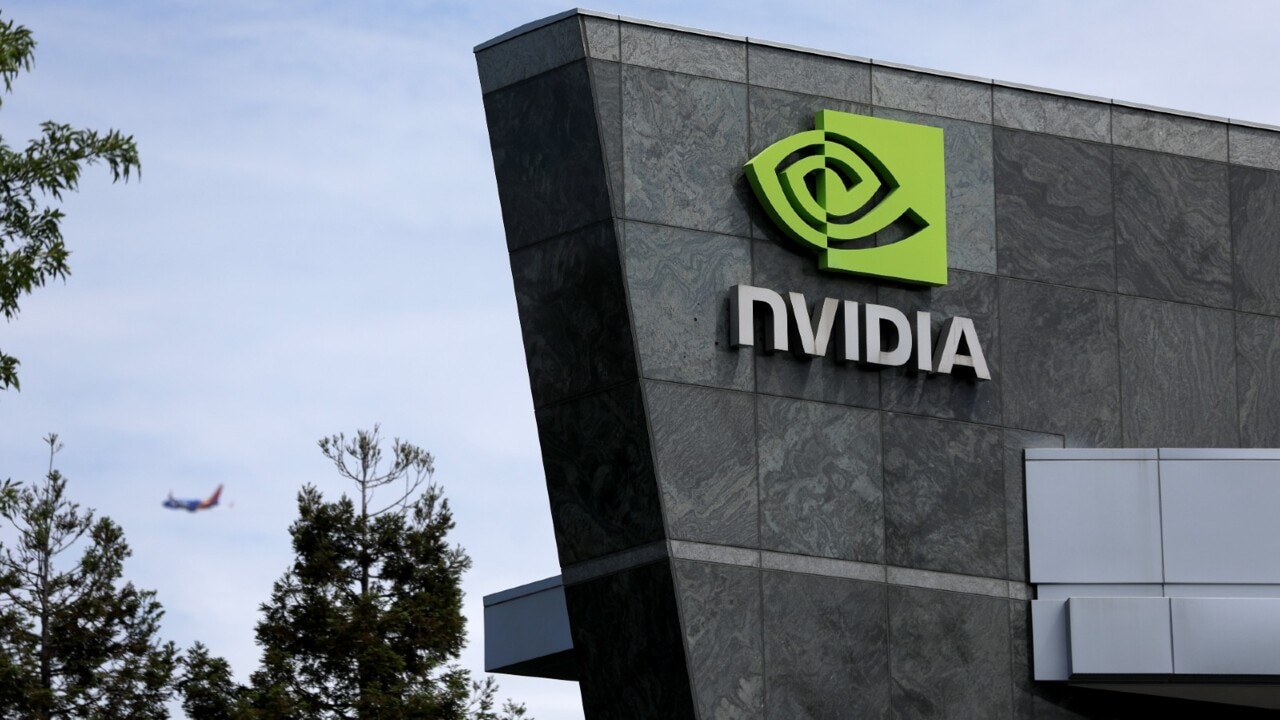Stockmarket FOMO back up to ‘correction territory’, Macquarie warns
Macquarie Equities warns that fear of missing out is back with a vengeance in the sharemarkets, signalling below-average returns for the year ahead.

As the US stockmarket hits record highs after a strong set of results from chipmaker Nvidia, Macquarie Equities warns that “FOMO” is back with a vengeance, signalling below-average returns for the year ahead.
Of course when it comes to the US stockmarket, fear-of-missing-out has been elevated all year.
The AI boom, resilient economic growth and dovish central banks have led investors to stay bullish even as speculation of interest rate cuts has waned significantly since January.
But while there have been some calls for a melt-up in stocks, stretched valuations, lingering inflation risks and a resurgence of interest in so-called meme stocks like GameStop and AMC Entertainment, this month has some wondering if the sharemarket is due for a deeper correction.
Macquarie Equities now says its “FOMO Meter” – which combines six measures of equity sentiment – is back up in “correction territory” after a sharp fall last month when equity benchmarks in the US and Australia experienced their biggest falls in the past six months.
Soon after Macquarie’s FOMO Meter hit 1.59 points at the end of March – its highest level since 2010 – amid peak “no-landing” and AI-related euphoria, the S&P 500 fell almost 6 per cent.
Australia’s S&P/AX 200 dived 5 per cent from a record high of 7910 at the start of April.
It came as a rising risk of further US rate hikes in response to stronger-than-expected inflation and economic growth data pushed bond yields up to six-month highs.
But concerns about inflation risks were subsequently ameliorated by signs of cooling in the US economy and Fed chair Jerome Powell’s guidance that renewed interest rate hikes were “unlikely”.
The FOMO Meter bottomed at 0.64 points in mid-April before rising to 1.35 at the end of last week.
From April 19 to May 23, the S&P 500 rose as much as 7.8 per cent to a record intraday high of 5341.88 points but turned down sharply last Thursday, even as Nvidia rose 9.3 per cent on stronger than expected quarterly sales and guidance.

Australia’s S&P/ASX 200 index bounced as much as 5.4 per cent from its April 19th low, but subsequently shied off its record high amid a range of disappointing corporate updates.
According to Macquarie’s Australian equity strategist, Matthew Brooks, the latest jump in FOMO featured a rise in the equity exposure of active managers, a drop in equity volatility as measured by the CBOE VIX volatility index and many more stocks rising over their 200-day moving averages.
“Sentiment could still get more bullish in the short term, but given investors are already positive, we expect a correction in June, which is often a weaker month,” Mr Brooks said.
As was the case in April, he expects a correction in equities to be driven by higher bond yields, due to the rise in commodities and reduced scope to cut interest rates.
A “correction” in financial markets is normally defined as a fall of between 10 and 20 per cent.
The recovery in stockmarket sentiment since mid-April has been supported by weaker-than-expected economic data, which drove a dovish shift in interest rate expectations and lower bond yields. But these forces are set to reverse according to Mr Brooks.
“With equity sentiment bullish again, there is a greater risk a correction has already started, likely driven by higher yields,” he said.
However, history shows that a strong US sharemarket performance in the first 100 trading days of the year bodes well for the rest of the year.
The S&P 500 rose 10.4 per cent in the first 100 days of this year against an average of 3.6 per cent gain in the first 100 days going back to 1950.
When the index has gained 10 per cent or more through the first 100 trading days, the rest of the year it has gone on to rise by an average of 8.6 per cent, according to Dow Jones Market Data.
In that scenario it has gone up 85 per cent of the time, and has also done so in the past nine times. It has also been the best first 100 trading days of an election year on record.
But in Australia, Macquarie’s Mr Brooks also now sees some “risk of a downgrade cluster” as the corporate “confession season” continues next month ahead of reporting season in August.
Earnings trends were better than usual in recent months, culminating in a relatively positive Macquarie Australia Conference this month.
However, a surprise drop in new orders in the latest NAB Business Survey was a “negative signal”.
The last time that new orders saw a similar drop, in May 2023, there was a cluster of retail downgrades and a relatively large 3.3 per cent month-on-month fall in the consensus estimate or aggregate earnings per share in the following month.
Indeed in recent weeks there have been a range of disappointing updates from companies including Fletcher Building, Sonic Health Care, James Hardie, Eagers Automotive and Telstra.
Sonic flagged that most of its earnings would come in the second half of financial 2024.
Mr Brooks is wary of other stocks with expectations of a high skew of earnings to the second half of the financial year, including Downer, Ramsay Health Care and Reliance Worldwide.
However, there has been less FOMO in the resources sector, according to Mr Brooks.
And with commodity indices still 18-25 per cent below 2022 highs – gold and copper have hit record highs – he sees less FOMO in commodities than equities.
Meanwhile, the rise in commodities is adding upward pressure to producer and consumer inflation, and the global economic cycle is still in “expansion”.
Mr Brooks thinks this will drive a shift back to positive economic surprises.
“Taken together, we do not think the upside risk to bond yields has passed and that resources provide a good hedge,” he said. “We also note there are implied earnings upgrades for iron ore, copper and gold given spot prices are currently above 2025 consensus price forecasts.”
Insurers have tended to outperform in recent corrections driven by higher yields.








To join the conversation, please log in. Don't have an account? Register
Join the conversation, you are commenting as Logout